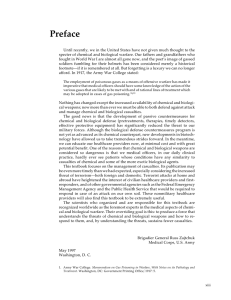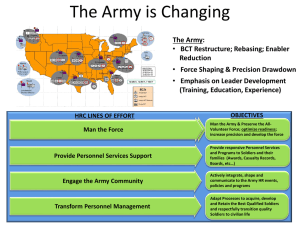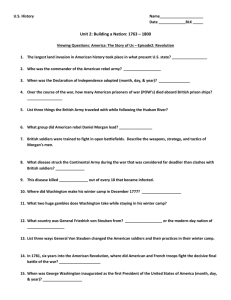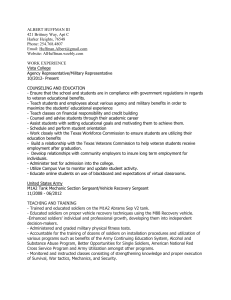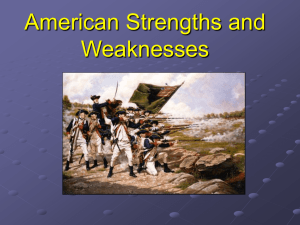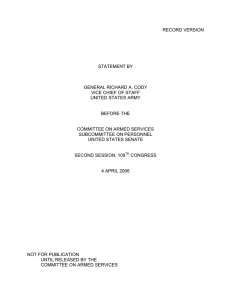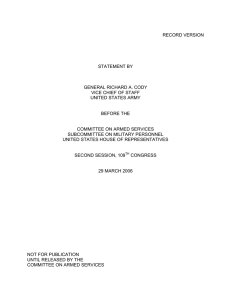The Civil War Strengths and Weaknesses between
advertisement
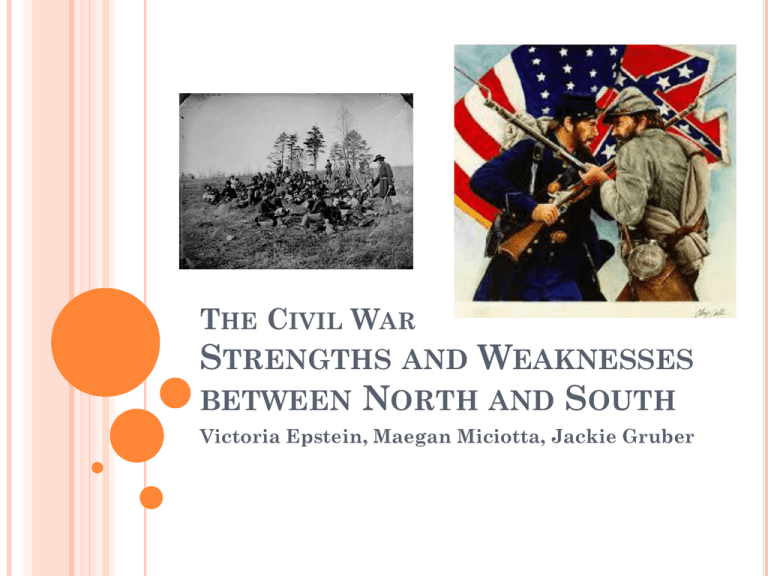
THE CIVIL WAR STRENGTHS AND WEAKNESSES BETWEEN NORTH AND SOUTH Victoria Epstein, Maegan Miciotta, Jackie Gruber ADVANTAGES IN THE NORTH Population -The Union had 23 states, and nearly 22 million people -More people to participate in army -had more workers to take over the jobs of soldiers Industry -had 90% of the nation’s industry -produced weapons and war supplies -more urbanized areas, better technology -Crops more edible, compared to Southern cotton -most metal and coal deposits found in the north Transportation -Large Navy and Foil Ships -used strategic blockades to divide the south -70% of railroad lines transport food and troops Union had U.S. army, experience DISADVANTAGES IN NORTH unfamiliar territory long distances to travel Due to large areas of land, it took more time and effort to get troops and supplies to their army Emancipation Proclamation changed purpose of War from preserving the Union to abolishing slavery. ADVANTAGES IN SOUTH Motivation -Fighting took place on their own territory, familiar lands -Fought for their independence, psychological advantage -Easier to get volunteers, more will to fight Possibility of alliance with European Powers (Britain and France) Training -Robert E. Lee, skilled military leader DISADVANTAGES IN SOUTH Population -Limited number of people to fight in the army -only 11 Confederate States and 9 million people. -Of those people, about one third were enslaved Southern militia volunteers were mostly farmers, with an extreme lack of experience Few railroads, making transportation difficult Few factories to produce weapons and war supplies. Attempt by Southerners to gain European support failed Lack of edible crops -cotton was the main focus of their industry Loss of morale by the end of the war WHY WAS THE WAR SO LONG? Food -Technological advancements such as iron and steel plows, seed drills, cultivators, and mechanical reapers and threshers allowed for a dramatic increase in agricultural production -Soldiers could be supplied with more food for longer periods of time, without the concern of starvation on the home front -In the last year of the war, as food production started to be come an issue, many soldiers began to return home to support their families. The lack of men in the army helped to wrap up the war Fighting delayed during winter months due to the difficulty transporting weapons and supplies Had to draft soldiers, lack of volunteers At times, the war became a stalemate, because each side was fighting to wear down the other. WORKS CITED PAGE http://teachinghistory.org/history-content/ask-ahistorian/24413 http://www.ushistory.org/us/33b.asp http://www.civilwar.org/resources/confederatestates-had-many.html http://quizlet.com/562389/strengths-andweaknesses-north-and-south-civil-war-flashcards/


